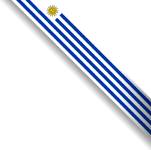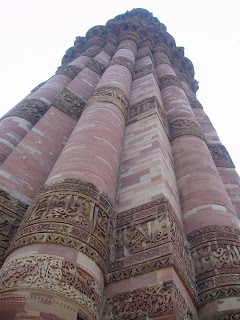El hospedaje puede ser una de las cosas que conviertan un viaje en una gran inversión o no. Hay muchas maneras de viajar y el lugar donde pernoctemos dependerá de nuestra intención en cuanto a dinero disponible y tipo de viaje que queramos hacer también. En mi caso, no dispongo de mucho dinero así que desde siempre he indagado por las formas de hospedaje más acorde a mi estilo.
Aquí les cuento cómo hacía cuando comencé a viajar. Con los años he cambiado mis tácticas a la hora de encontrar hospedaje pero creo que mi sistema inicial aún es aceptable para el que quiere viajar barato y sin muchas pretenciones. ¡La aventura es lo que vale! :)
The accommodation can be one of the things that turn a trip into an expensive investment or not.
There are many ways to travel and where we spend night depends on our money and the type of trip we want to
do.
In my case, I don´t have much money so I have
always looked for the way to get cheap lodging. Here I am writing my way when I started travelling.
Over the years I changed my tactics for finding accommodation but I
think my initial system is still acceptable for those who want to travel
cheaply and without many pretensions. Adventure is what counts!
Mi país se ubica en América del Sur así que mis primeros viajes fueron a los países que me rodean: Brasil, Argentina, Paraguay, Bolivia y Chile. Al llegar a destino lo primero es preguntar por la
Oficina de Información Turística que se ubica por lo general en la estación de autobuses o el centro de la ciudad. Ahí me hago de un pequeño mapa de la ciudad con las indicaciones de donde estoy yo en ese momento, la zona céntrica, puntos turísticos, etc. Estar bien ubicado es indispensable. Después viene la pregunta clave:
¿donde encontrar un hospedaje barato "como para mochileros"? Para mochileros, esas son las palabras exactas para que realmente entiendan lo que queremos, además que hay muchos establecimientos que se dedican a éste tipo de viajeros con bolsillos ajustados :) A veces tienen uno o dos lugares para indicarnos, otras veces nos envían a una zona de la ciudad donde estos alojamientos son comunes. Después queda caminar, caminar y preguntar. Si en uno no hay lugar se le pregunta si no sabe de otro alojamiento similar. Siempre saben.
My
country is located in South America so my first trips were to countries
around me: Brazil, Argentina, Paraguay, Bolivia and Chile. After arriving the first thing is to ask for the Tourist Information Office. It is located usually in the bus station or in the center of the city. There we can get a small city map with directions of where we are in that moment, the downtown area, tourist places, etc.. Being well located is indispensable. Then the key question comes: where to find a cheap accommodation "for backpackers"? For backpackers, those are the exact words we should say for making them to understand what we really want. Moreover many lodgings work with this type of travellers only.
Sometimes they have one or two places, sometimes they send us into
an area of the city where these accommodations are common. Then walk and ask. If there is not place in the first then you can ask them for another similar lodging. They always know.
En el caso de que nuestro destino sea en un pequeño pueblo donde no hay información turística entonces vamos al primer comercio, tienda, almacén que veamos y preguntamos. En los pueblos pequeños todos se conocen.
In the case that our destination is in a small town where there is no tourist
information then go to the first store/shop and ask them. In small towns, everyone knows everyone.
Otra opción, a utilizar sólo cuando se nos está haciendo realmente dificil encontrar algo (sólo lo hice dos veces con buenos resultados en Santiago de Chile y Buzios) es preguntar a algún vendedor ambulante (sí, de esos que tienen su puesto de ventas en la vereda) con cara de "buena persona" ja ja Los que siempre saben de algún lugar son los extranjeros que costean sus viajes trabajando como artesanos, etc en los puntos turísticos de la ciudad ya que ellos también se alojan en lugares económicos. Así que si ves algún artesano, él te puede ser muy útil.
Es importante tomar en cuenta que en algunos países como Bolivia es imprescindible preguntar si disponen de ducha, ya que no todos los hoteles baratos tienen (!) Además
antes de pagar, siempre hay que ver la habitación primero. ¡No sea que lo barato salga caro!
Another
option, to be used only when we are getting really hard to find
something (just did it twice with good results in Chile and Buzios) is asking to a
street vendor (yes, the guys selling items on the sidewalk) The foreigners artisans always know something because they too spend night in cheap accommodations. So if you see an artisan, he is your man.
It is important to note that in some countries, like Bolivia, it is
imperative to ask if they have shower facilities, since not all hotels have (!)
Also before paying, you should always see the room first. Otherwise you can get a bad surprise!


























































